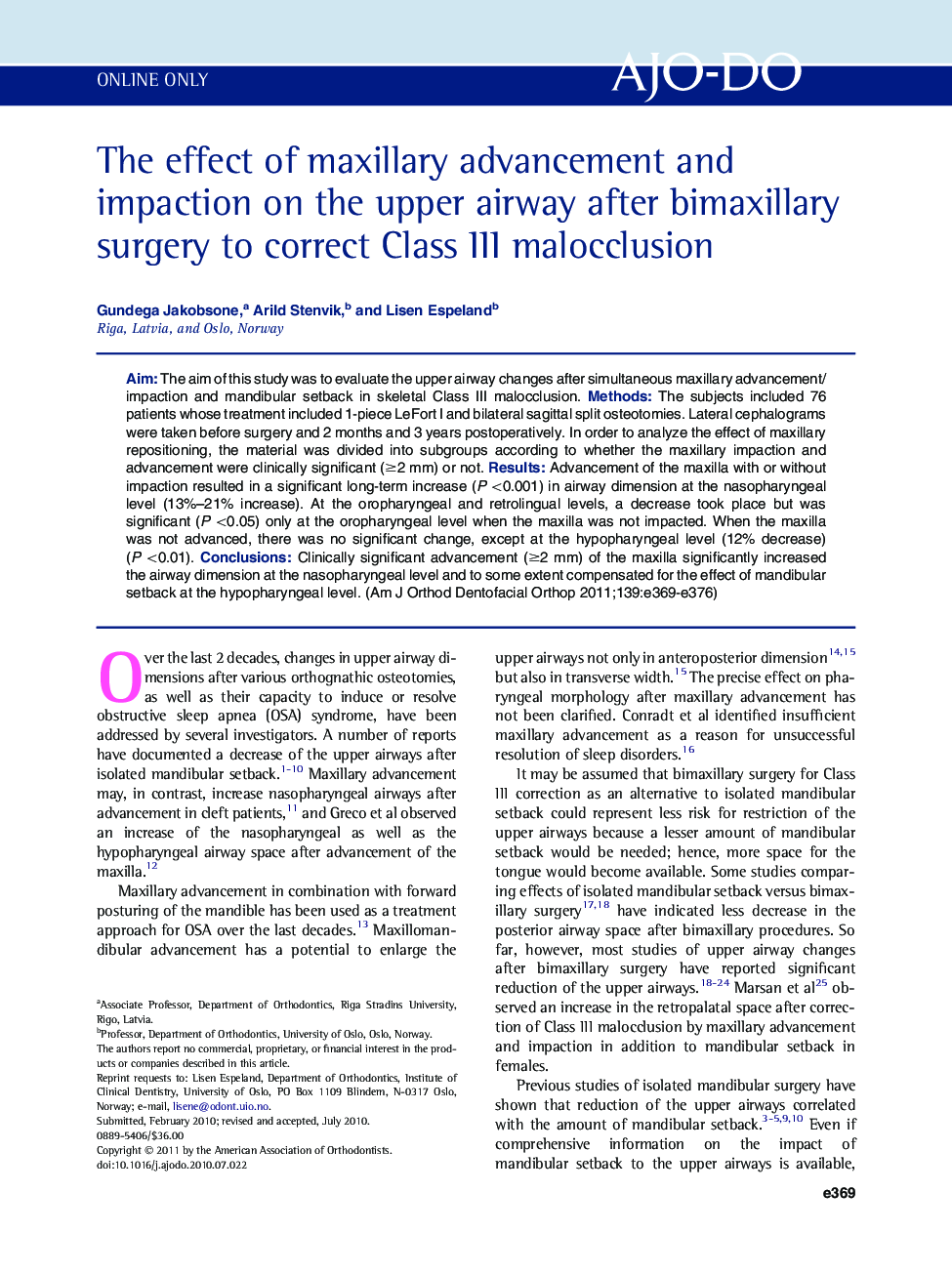| Article ID | Journal | Published Year | Pages | File Type |
|---|---|---|---|---|
| 3118961 | American Journal of Orthodontics and Dentofacial Orthopedics | 2011 | 8 Pages |
AimThe aim of this study was to evaluate the upper airway changes after simultaneous maxillary advancement/impaction and mandibular setback in skeletal Class III malocclusion.MethodsThe subjects included 76 patients whose treatment included 1-piece LeFort I and bilateral sagittal split osteotomies. Lateral cephalograms were taken before surgery and 2 months and 3 years postoperatively. In order to analyze the effect of maxillary repositioning, the material was divided into subgroups according to whether the maxillary impaction and advancement were clinically significant (≥2 mm) or not.ResultsAdvancement of the maxilla with or without impaction resulted in a significant long-term increase (P <0.001) in airway dimension at the nasopharyngeal level (13%–21% increase). At the oropharyngeal and retrolingual levels, a decrease took place but was significant (P <0.05) only at the oropharyngeal level when the maxilla was not impacted. When the maxilla was not advanced, there was no significant change, except at the hypopharyngeal level (12% decrease) (P <0.01).ConclusionsClinically significant advancement (≥2 mm) of the maxilla significantly increased the airway dimension at the nasopharyngeal level and to some extent compensated for the effect of mandibular setback at the hypopharyngeal level.
